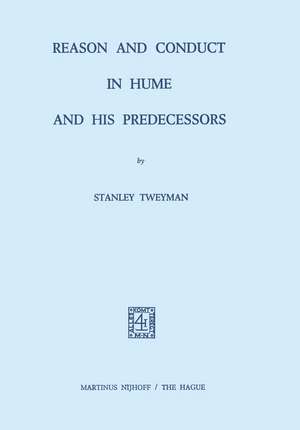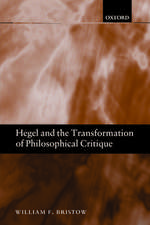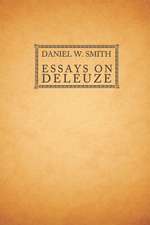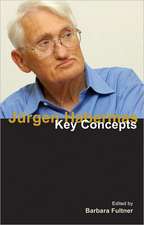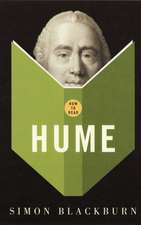Reason and Conduct in Hume and his Predecessors
Autor S. Tweymanen Limba Engleză Paperback – 31 dec 1974
Preț: 383.71 lei
Nou
Puncte Express: 576
Preț estimativ în valută:
73.42€ • 76.86$ • 60.75£
73.42€ • 76.86$ • 60.75£
Carte tipărită la comandă
Livrare economică 05-19 aprilie
Preluare comenzi: 021 569.72.76
Specificații
ISBN-13: 9789024715824
ISBN-10: 9024715822
Pagini: 192
Ilustrații: 190 p.
Dimensiuni: 170 x 244 x 10 mm
Greutate: 0.31 kg
Ediția:Softcover reprint of the original 1st ed. 1974
Editura: SPRINGER NETHERLANDS
Colecția Springer
Locul publicării:Dordrecht, Netherlands
ISBN-10: 9024715822
Pagini: 192
Ilustrații: 190 p.
Dimensiuni: 170 x 244 x 10 mm
Greutate: 0.31 kg
Ediția:Softcover reprint of the original 1st ed. 1974
Editura: SPRINGER NETHERLANDS
Colecția Springer
Locul publicării:Dordrecht, Netherlands
Public țintă
ResearchCuprins
One : Moral Philosophy and its Method.- I. Aim of Moral Philosophy.- II. Method.- III. Justification of the Method.- Two : Impressions and Ideas.- I. Impressions and Ideas Differ in Kind.- II. Distinctions in Kind.- III. The Criterion of Force and Vivacity.- IV. The Criterion of Substantial Existence.- V. Impressions are Paradigmatic; Ideas are Derivative.- VI. The Role of Force and Vivacity.- VII. Further Confirmation Provided by the Missing Shade of Blue.- Three : Hume’s Analysis of Reason.- I. Three Senses of Reason.- II. Causal Reasoning.- III. Distinctions of Reason.- IV. Reason as the Comparison of Ideas.- Four : Reason and Conduct in Hume’s Predecessors.- I. Ralph Cudworth.- II. Samuel Clarke.- III. William Wollaston.- Five : Hume contra the Rationalists.- I. Introduction.- II. Critique of Wollaston.- III. Critique of Clarke.- Six : Reason and the Will.- I. Introduction.- II. The Alleged Combat Between Reason and Passion.- Seven : Reason and Moral Conduct.- I. How Moral Rules are Obtained : The Three Stages in Hume’s Argument.- II. The First Stage : The “Is-Ought” Passage.- III. The Second Stage : Examining the Impressions which Give Rise to Moral Distinctions.- IV. The Third Stage : Proving that Moral Rules Can only be Obtained from the Moral Impressions Identified in the Second Stage.- Conclusion.
